June 11, 2022
Last Thursday evening the eastern sky roiled with clouds of burnt umber sutured together with dendrites of lightning. The air smelled of dust and wet straw. The National Weather Service issued a severe thunderstorm warning for a system moving north out of Mexico toward Bisbee at ten miles per hour.
Lightning. Thunder. Rain. Enough rain to clear the gutters. The first monsoon storm of the summer and one of the earliest on record. Probably because I ordered water and filled the tanks...again.
This morning, as the day heats up and sucks the moisture from the air, a Townsend’s solitaire comes to the fountain to bathe. I blink my eyes. A solitaire in June? I snap pictures, thinking I only see these thrushes in the spring or late fall, and then only rarely. This one should be breeding along Arizona’s forested edges in the White Mountains or on the Mogollon Rim. But here it is, bathing in my yard in the Mule Mountains. The only Townsend’s solitaire reported in Cochise County.
The bird tops a week of firsts. A pair of brown-crested flycatchers has chosen the nest box I constructed two years ago—and has remained untouched since—to raise their young. A male rose-breasted grosbeak graced my feeders for a second in time this season—the only one to make the rare bird report in the county. And, after failing at attempts on four consecutive evenings as the birds came to the fountain for insects, I finally managed to photograph a Mexican whip-poor-will.
I had no idea. The metallic-feathered goatsucker could be yard art.
Thanks for supporting the Big Yard! More to come!
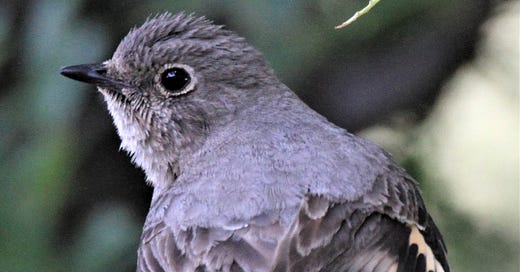




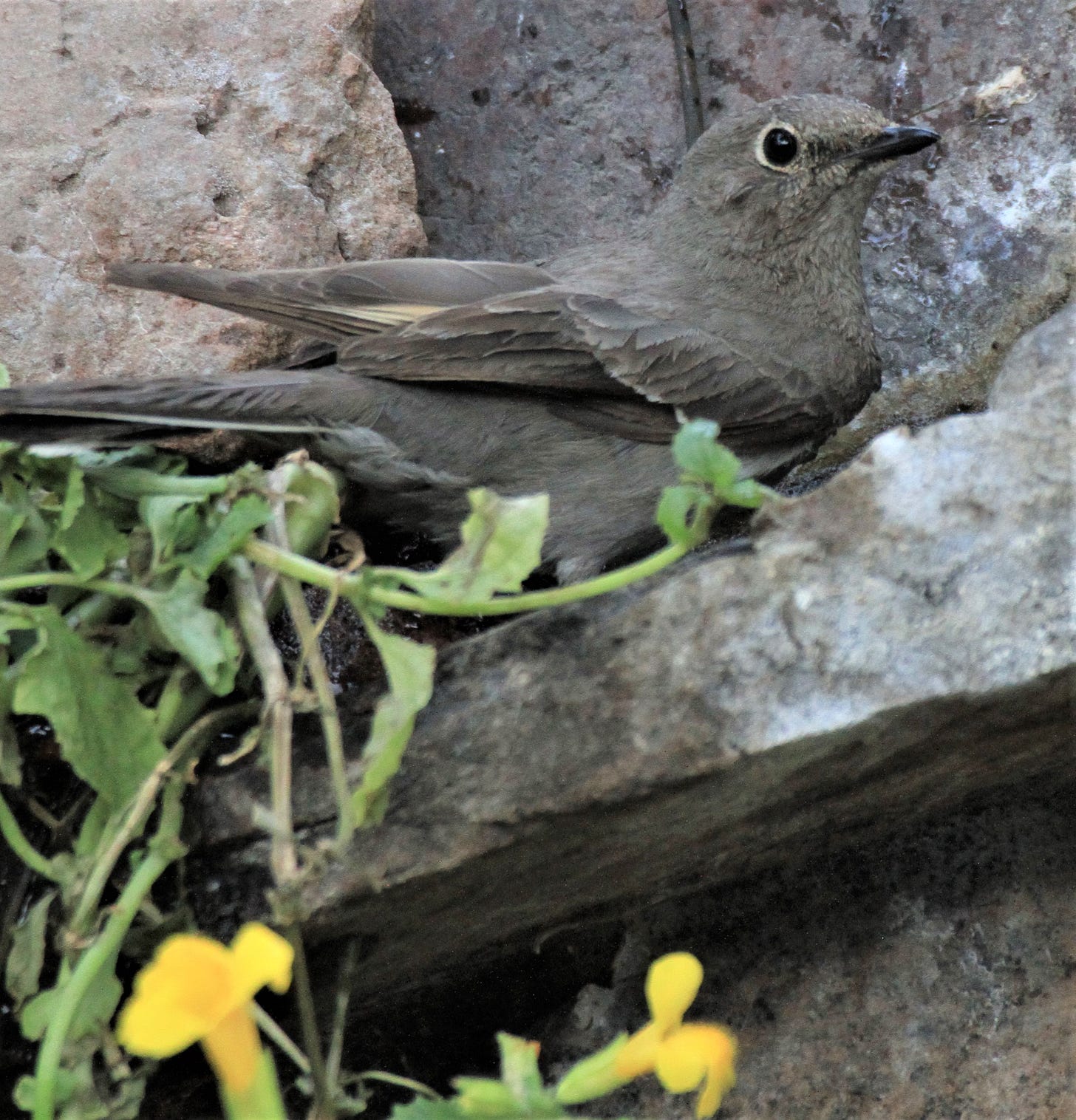
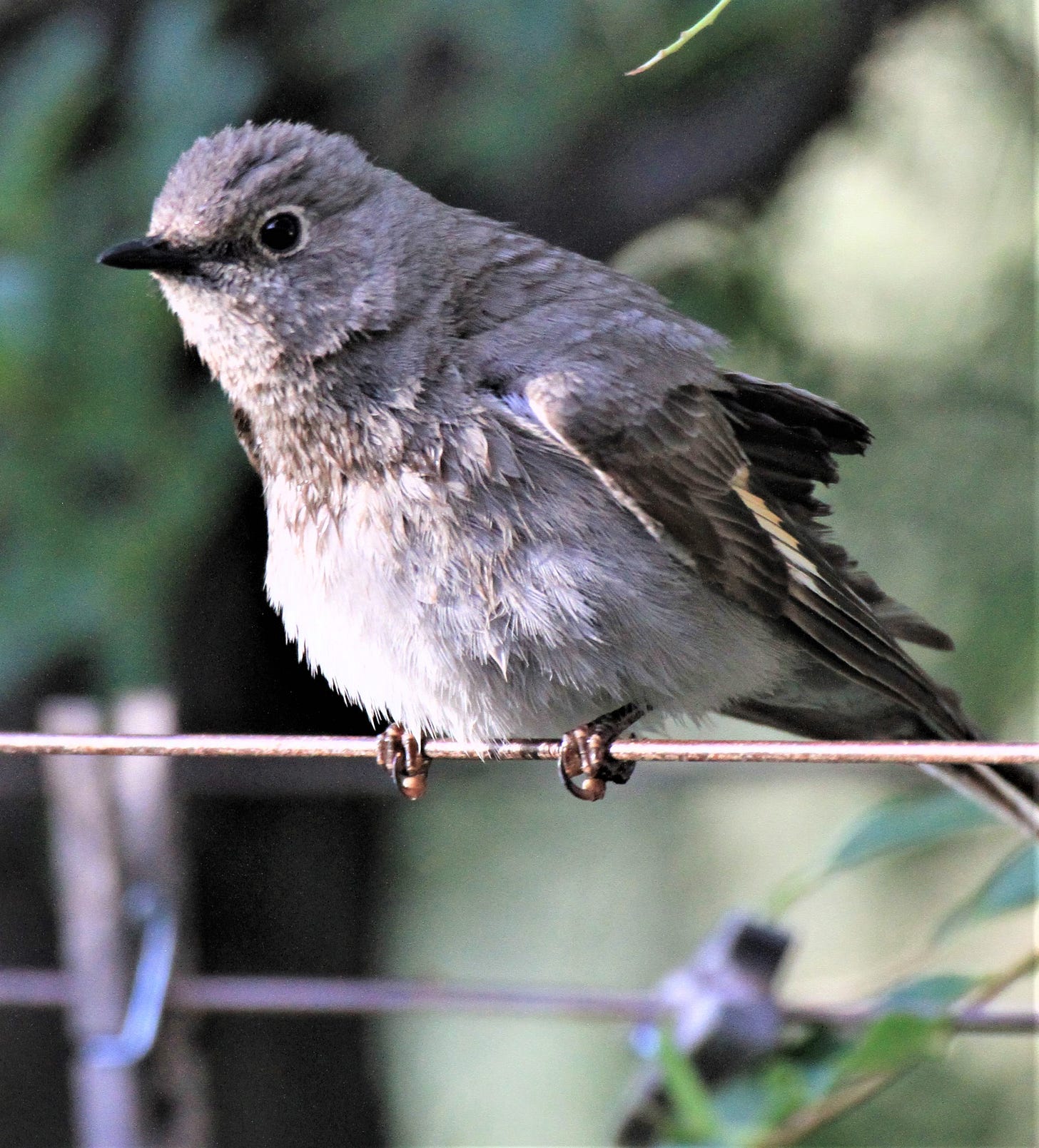
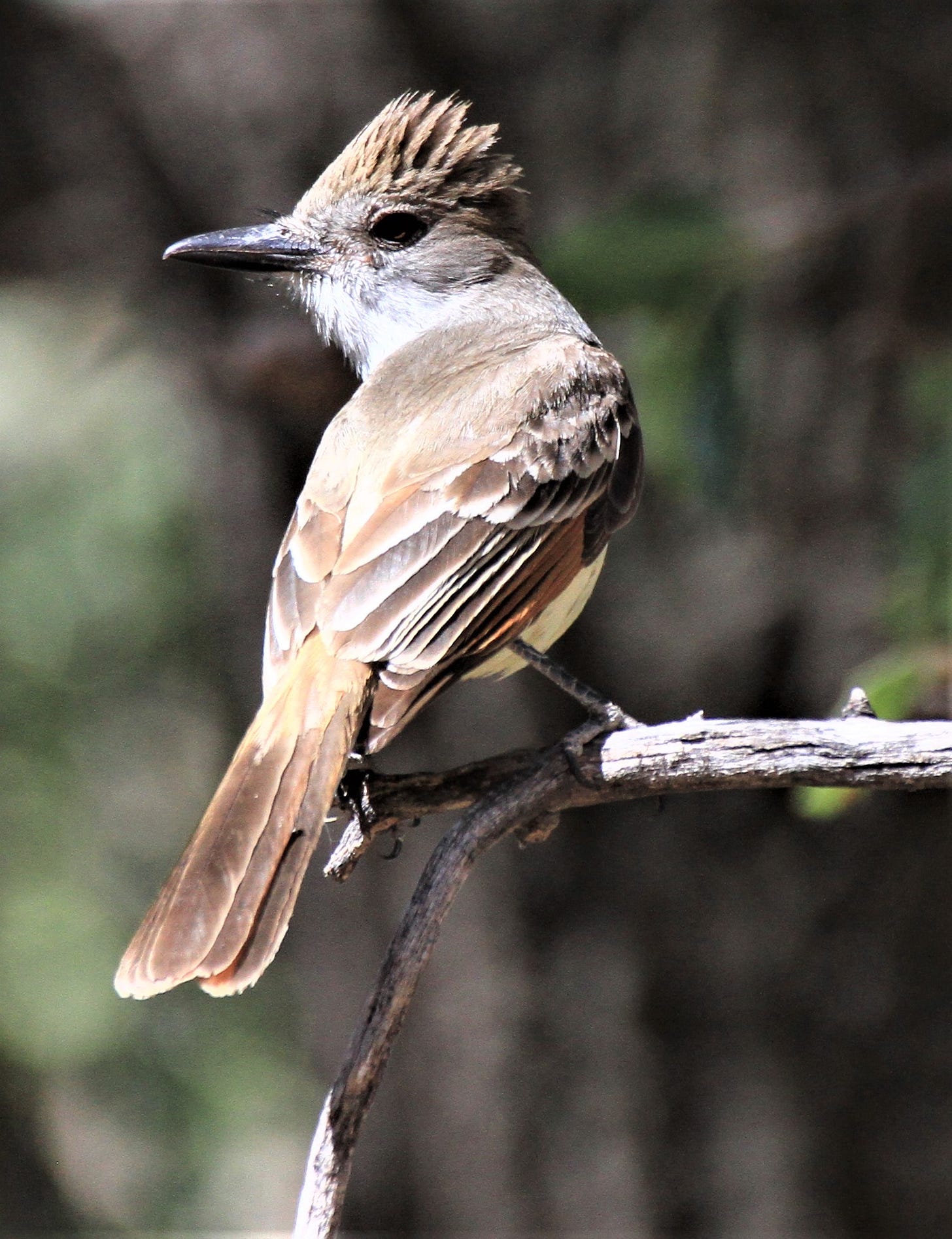
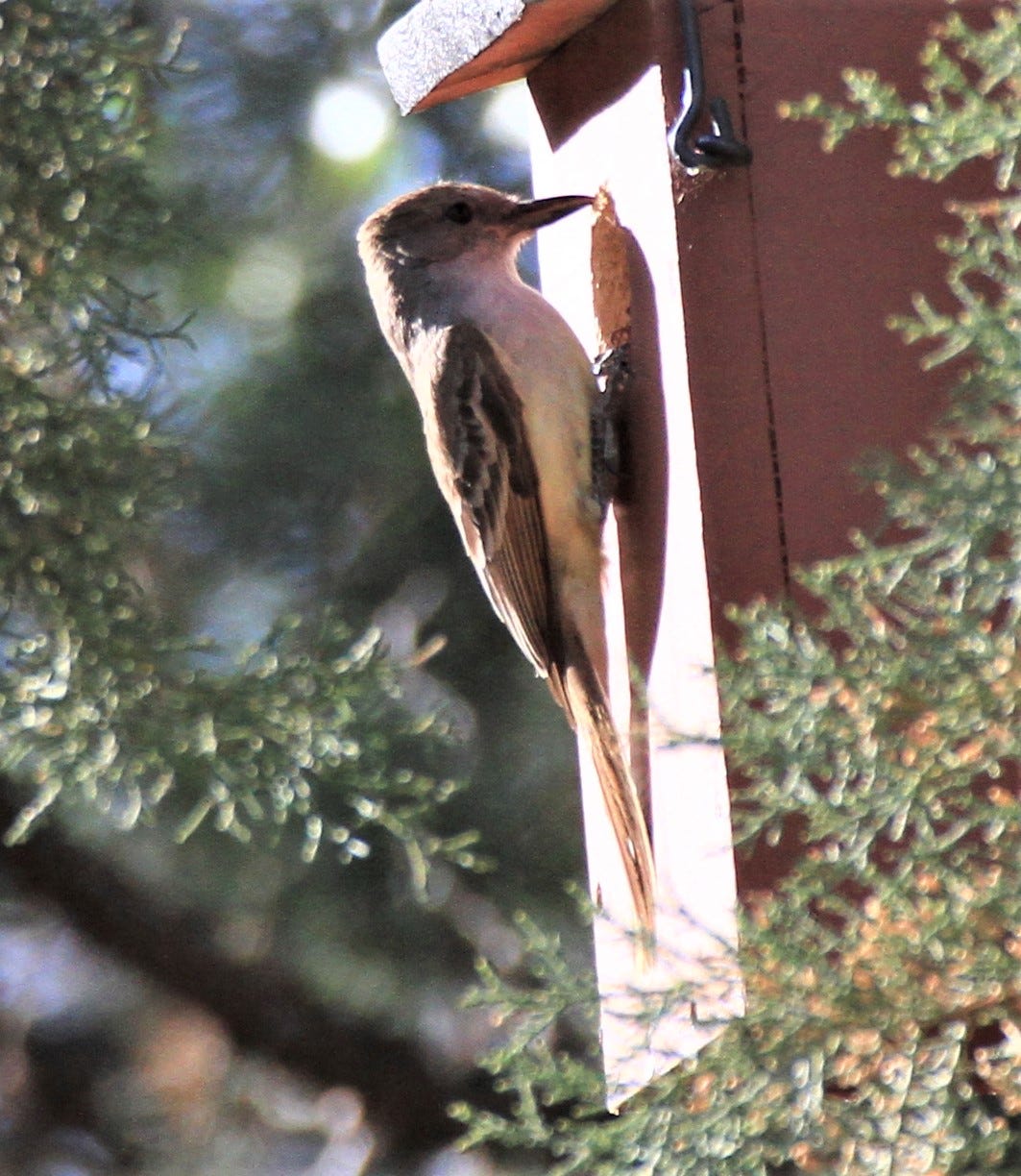

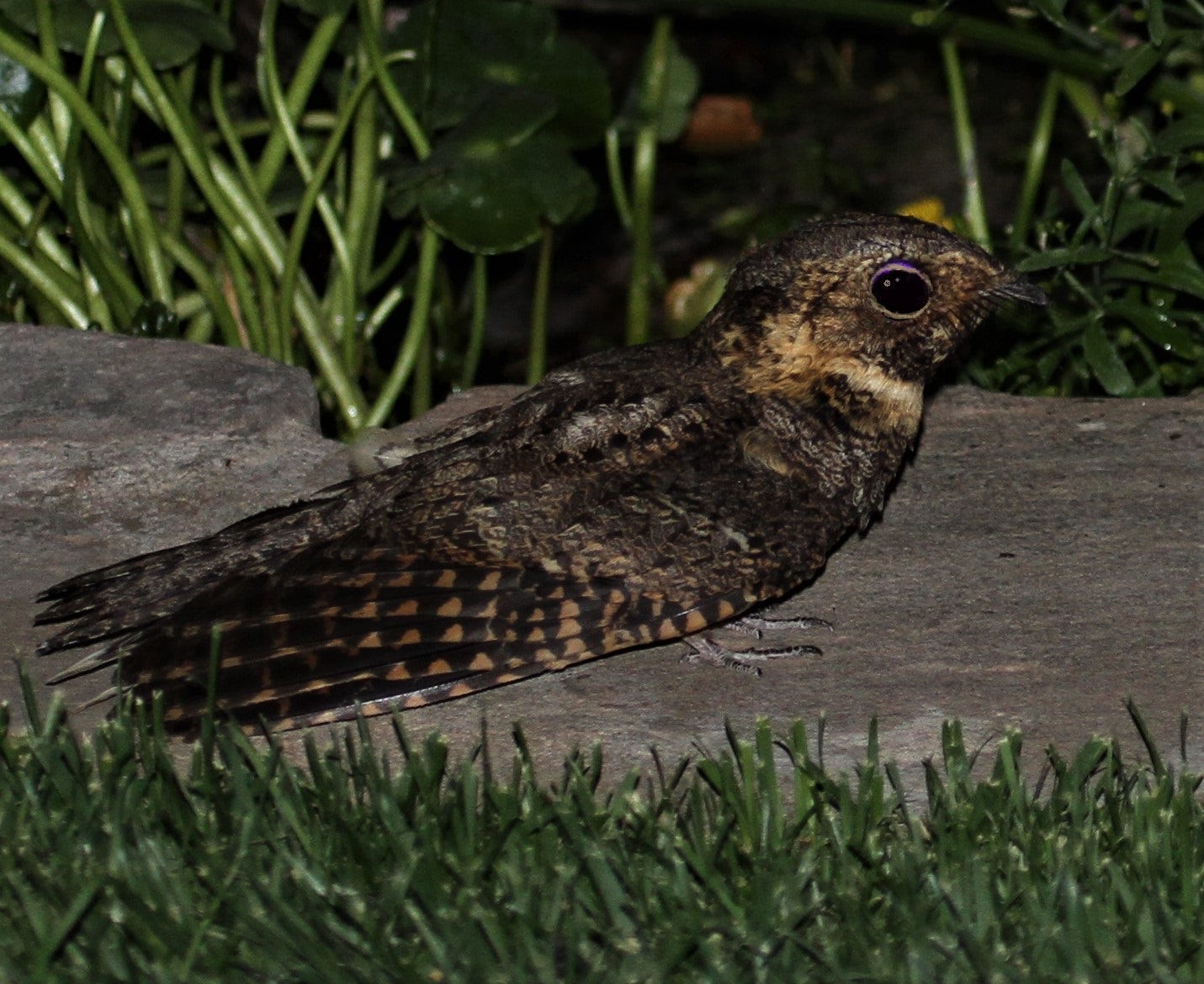
West Tucson. My Flicker has brought her baby out to feed. Actually she feeds at the suet, flys up and feeds the waiting offspring. Just one but this is the 1st year I've seen a baby - who is already quite big. I never knew parents continued to feed the fledglings. I've seen the Gila Woodpeckers and finches do the same. Even male Gilas feed the young.